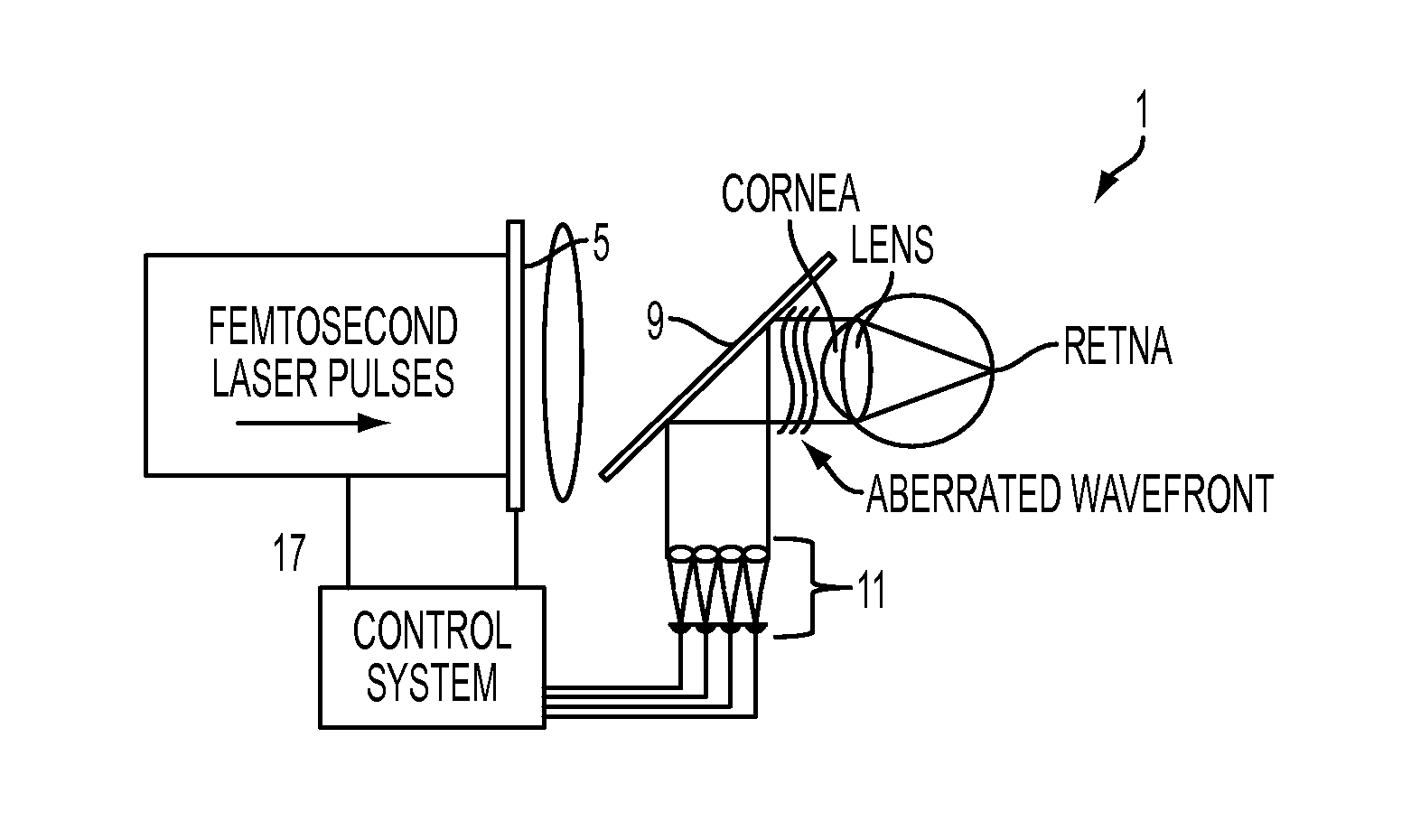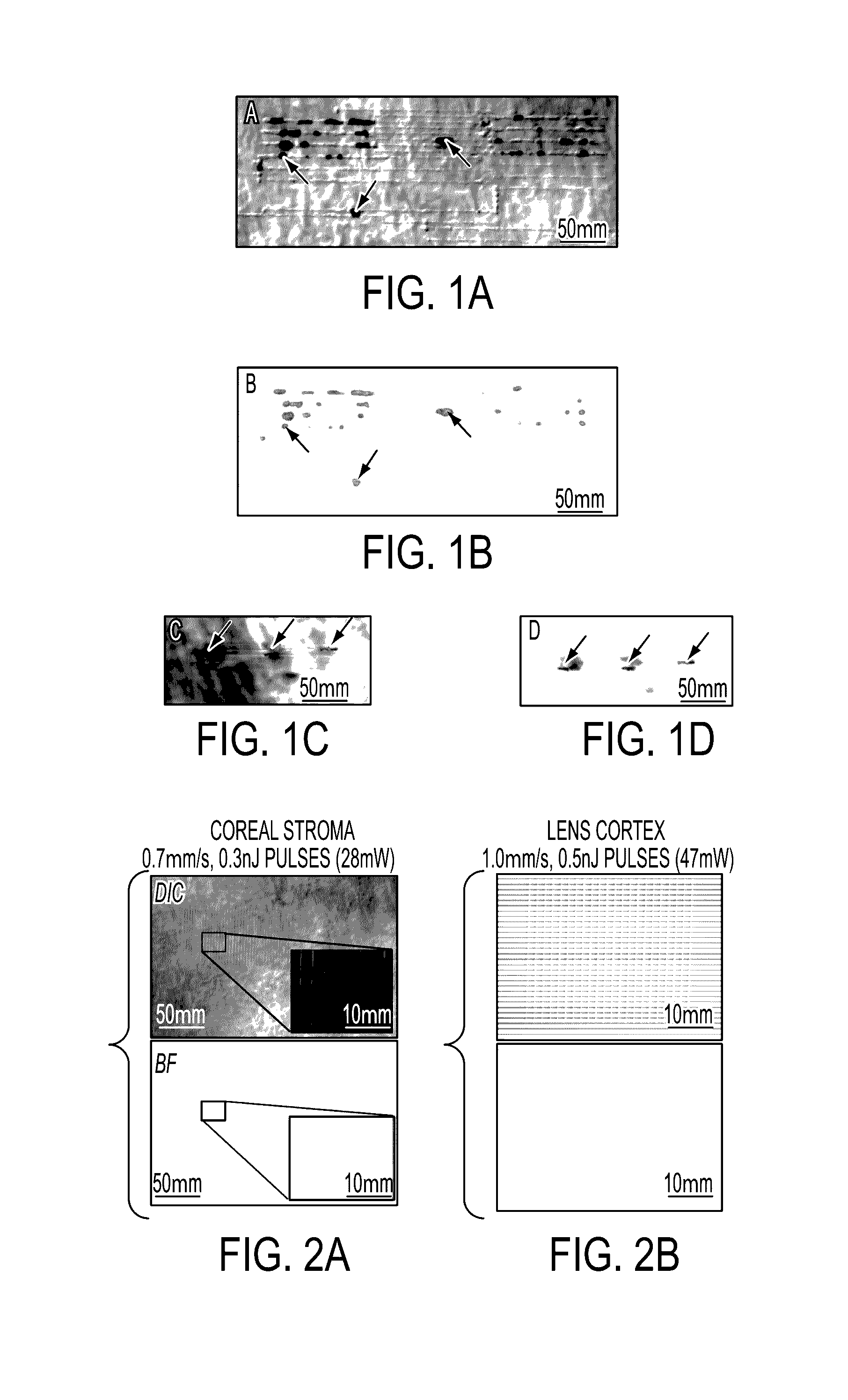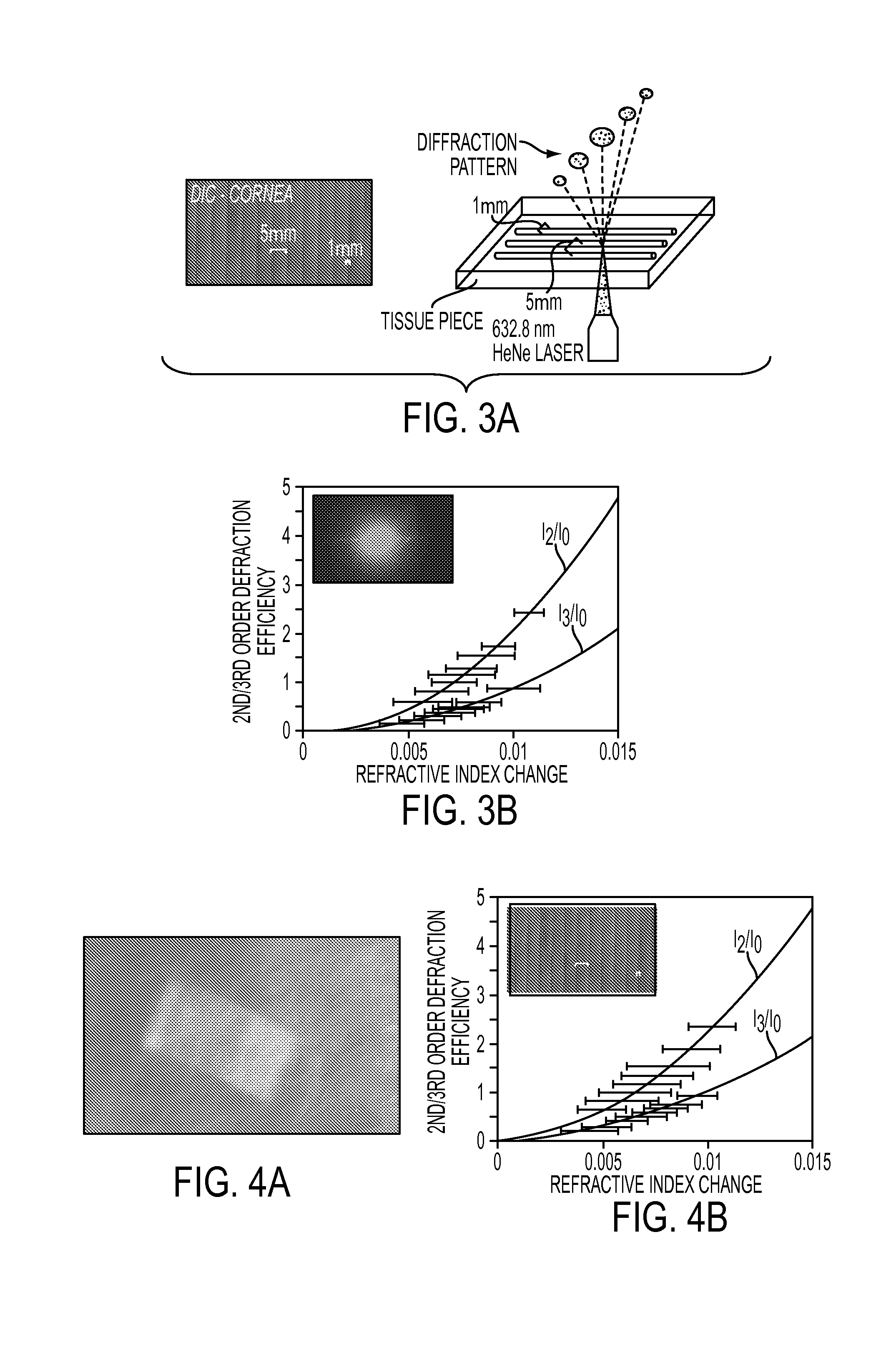Multi-photon absorption for femtosecond micromachining and refractive index modification of tissues
a multi-photon absorption and tissue technology, applied in the field of vision correction, can solve the problems of tissue destruction, high cost of femtosecond laser flap cutting, and limited tissue destruction,
- Summary
- Abstract
- Description
- Claims
- Application Information
AI Technical Summary
Benefits of technology
Problems solved by technology
Method used
Image
Examples
Embodiment Construction
[0110]A preferred embodiment of the present invention will now be set forth in detail with reference to the drawings.
[0111]Our preliminary experiments (Ding, Huxlin & Knox, 2007, Ding et al., 2008, Huxlin, Ding & Knox, 2008) showed that it is possible to change the refractive index of the lightly-fixed, mammalian cornea and lens without tissue destruction, a phenomenon we termed Intra-tissue Refractive Index Shaping (IRIS). To achieve this, we first measured, then reduced femtosecond laser pulse energies below the optical breakdown threshold of lightly-fixed post-mortem cat corneas and lenses. In both silicone and non-silicone-based hydrogels, this approach induced a significant change in refractive index without visible plasma luminescence or bubble formation (Ding et al., 2006).
[0112]Eight corneas and eight lenses were extracted under surgical anesthesia from five normal, adult domestic short-hair cats (felis cattus). To avoid decomposition and opacification prior to femtosecond l...
PUM
 Login to View More
Login to View More Abstract
Description
Claims
Application Information
 Login to View More
Login to View More - R&D
- Intellectual Property
- Life Sciences
- Materials
- Tech Scout
- Unparalleled Data Quality
- Higher Quality Content
- 60% Fewer Hallucinations
Browse by: Latest US Patents, China's latest patents, Technical Efficacy Thesaurus, Application Domain, Technology Topic, Popular Technical Reports.
© 2025 PatSnap. All rights reserved.Legal|Privacy policy|Modern Slavery Act Transparency Statement|Sitemap|About US| Contact US: help@patsnap.com



